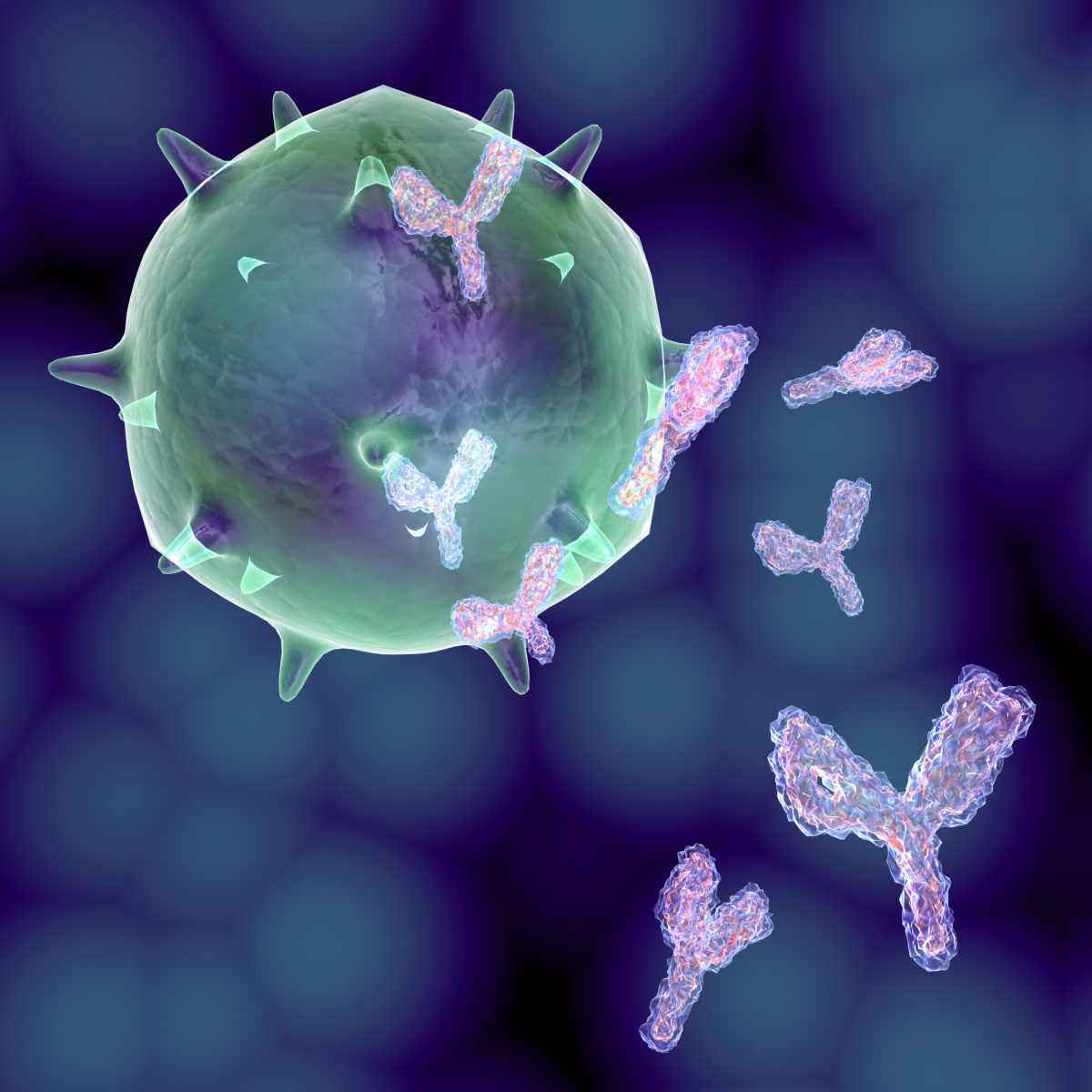Antibody Response Against HCMV Could Drive Scleroderma, Study Finds
Written by |

Patients with scleroderma show more frequent and/or stronger immune responses against the human cytomegalovirus (HCMV), suggesting a role in disease development, according to new research.
The findings also revealed a correlation between these viral responses and scleroderma-associated autoantibodies.
The study, “A comprehensive analysis of antigen-specific antibody responses against human cytomegalovirus in patients with systemic sclerosis,” was published in the journal Clinical Immunology.
HCMV has been implicated in the development of scleroderma, with increased levels of anti-HCMV antibodies reported in this patient population. Furthermore, a link between HCMV and TGF-beta1, a key promoter of fibrosis (scarring) in scleroderma, has been shown. Work in mice showed that an anti-HCMV response can induce damage and activation of the endothelial cells that line the interior of blood vessels, which can trigger fibrosis.
However, an association between HCMV antibodies and scleroderma has been shown in only limited HCMV antigens — the targets of antibodies.
Aiming to address this gap, a team from the University of Thessaly and University of Patras, both in Greece, and Euroimmun evaluated the responses to six prominent HCMV antigens — UL57, UL83, UL55, UL44, p38, and UL99 — and their relation to clinical and immunological features in scleroderma patients.
A total of 110 patients were included (median age 55 years, range 25–87 years), 90 of whom were women. Fifty-nine patients had limited cutaneous disease; 51 had diffuse cutaneous (dcSSc) disease.
Researchers compared responses in scleroderma to those in multiple sclerosis (MS), a disease where the link with HCMV is well-known. For this purpose, 60 MS patients were included (47 women, median age 52.8 years, age range 30–69). In addition, 51 healthy controls (age- and sex-matched individuals) were also analyzed; these individuals had no family history of autoimmune disorders.
Results showed that anti-HCMV antibodies were present in 102 patients with scleroderma (92.7%) — 54 with limited, and 48 with diffuse disease — in 54 (90%) of patients with MS, and 36 healthy controls (70.6%). These results suggested that these antibodies were more common in patients with either scleroderma or MS than in the controls.
Concerning individual antigens, the most immunoreactive in scleroderma patients were UL57 (97.1%), UL99 (75.5%), UL83 (68.6%), and UL55 (51%). Compared to the other two groups, patients with scleroderma showed reduced frequency of anti-UL83 antibodies compared with controls (68.6% versus 88.9%), and a higher frequency of anti-UL57 antibodies than in MS patients (97.1% versus 81.5%).
In turn, analysis of the two scleroderma subtypes showed decreased reactivities against UL83 — responsible for evading host immune cells — in diffuse scleroderma (64.6% versus 88.9%) and p38 in limited scleroderma (9.3% versus 27.8%) compared to the controls.
Also, anti-UL57 antibodies were more frequent in patients with limited scleroderma than with MS, while anti-UL55 antibodies were more common in both limited and diffuse scleroderma. In contrast, anti-p38 responses were less frequent in limited scleroderma compared to MS.
Of note, the response against p38 was lower in limited scleroderma than in diffuse scleroderma. No other difference was found regarding response magnitude between the two scleroderma subtypes.
Reactivity to multiple viral antigens was less frequent in scleroderma than in controls, with the reactivity to five or six HCMV antigens being found in 14.7% of these patients and 33.3% of the controls.
As for the link between HCMV antibodies and scleroderma-associated autoantibodies, anti-centromere antibodies were more common in patients with anti-UL83 antibodies than in those without them.
The data further showed that the frequency of anti-RNA polymerase 55 and the magnitude of anti-RNA polymerase 11 antibodies were increased in scleroderma patients with anti-UL83 antibodies.
“We think that the most important finding of our study … is the likely association of anti-HCMV response with [autoantibodies] in [scleroderma],” the researchers stated.
Regarding the association with clinical features, the results only showed a tendency toward more frequent arthritis in anti-UL44-positive, than in anti-UL44-negative patients with scleroderma.
The team stated, “In conclusion, more prevalent and/or stronger antigen-specific HCMV responses are noted in SSc compared to controls, implying a role of these viral responses in SSc development.”
Nonetheless, the team emphasized that further studies in patients with very early disease are needed to better understand the association between scleroderma and antiviral responses against HCMV.





